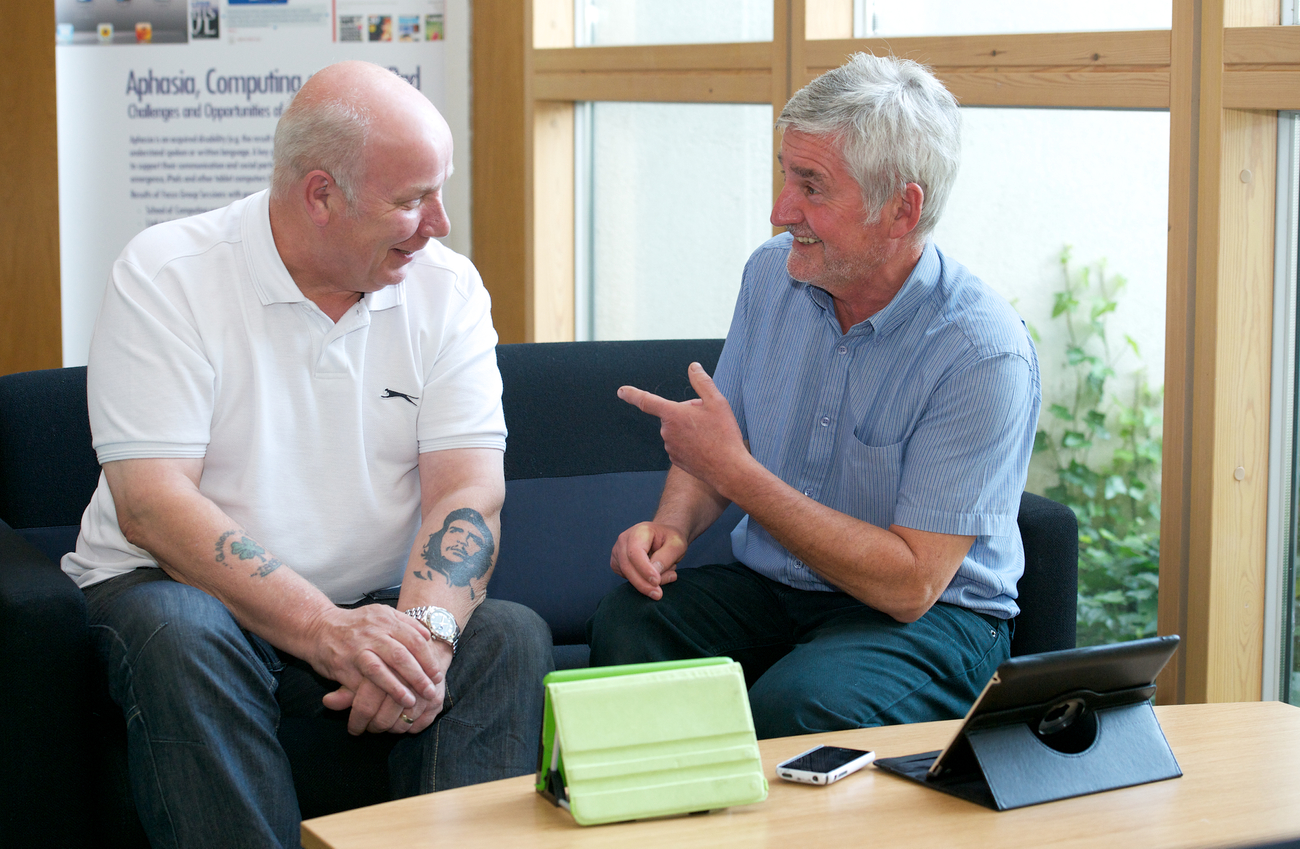Help for everyone

Introduction to AAC
Augmentative and Alternative Communication (AAC) is a term used to describe a huge range of things that can help people to get their message across when they find speaking difficult.
AAC can also help everybody to understand the world around them better – we all use signs and symbols everyday although we might not even think about it.
The term AAC can be used to describe things such as pictures, gestures, symbols, photographs as well as ‘high tech’ support including voice output communication aids.
It is estimated that 0.5% of the population could use AAC, which equates to around 26,500 people in Scotland. It can make a big difference for them if we are more aware of the many different ways that there are to communicate and how we can help.
See the links and advice below to find out more.
What can you do?
Recognise
Recognise that a right to ‘speak’ and be ‘heard’ is a fundamental human right, whether through verbal speech, gesture, signing, picture board or high tech device. Communicating is a fundamental piece of who we are and everyone deserves to be given the time and space to do it.
Recognise that everybody is different and that we all communicate in a variety of ways. AAC is not a single tool or approach that will help everybody. There is a range, and people who use AAC want others to support them to communicate in the way they find most effective.
Be patient
People who use AAC need you to be patient. Try to make sure you give people using AAC extra time to get their message across even though this can sometimes feel uncomfortable for you. It is ok to say that you would like to check that you have understood a person’s message by asking them a few questions.
Remember
Remember communication is a two way process. It involves information going in two directions – both being expressed and understood. Sometimes people who use AAC to express themselves might have difficulties understanding what you say to them – for example if they have problems with their hearing or interaction skills. It is important to not make assumptions and to ask the person what works best for them to help them communicate with you.
Respect
Address the person, not their carer or anyone else who might be with them.
Useful Links
You can find out more by visiting the following websites:
- AAC Scotland for videos on different ways to communicate.
Communications Matters to understand:
- Why would people use AAC?
- Having a conversation with a person using AAC
- Talking Point or Communication Trust for information specifically on children and AAC.